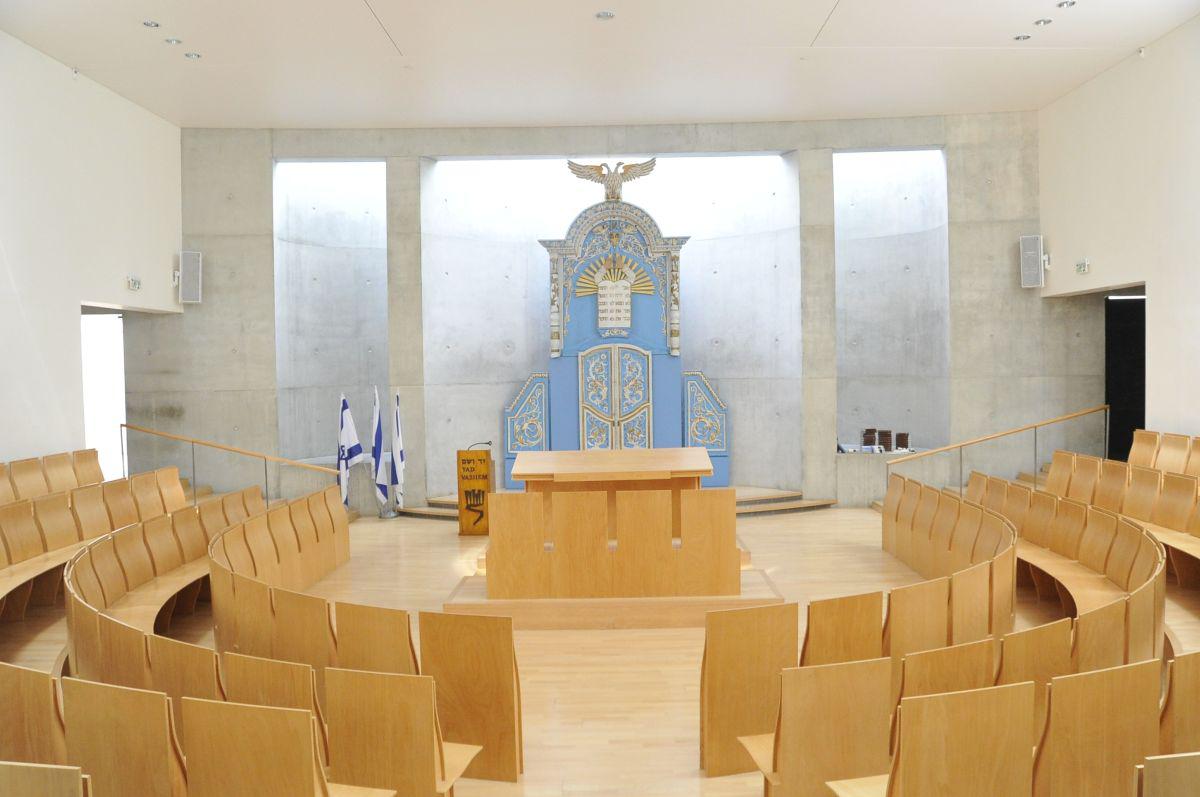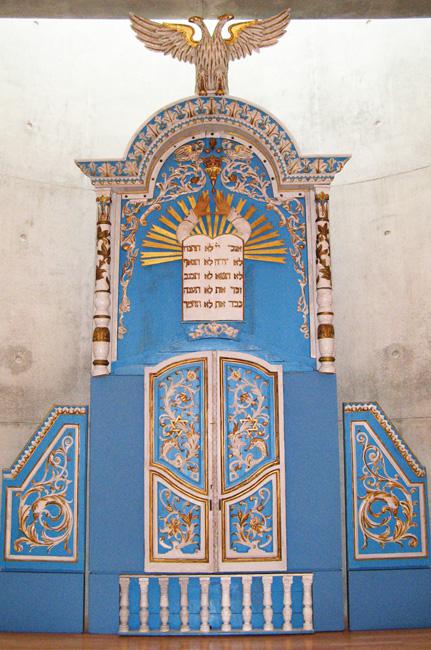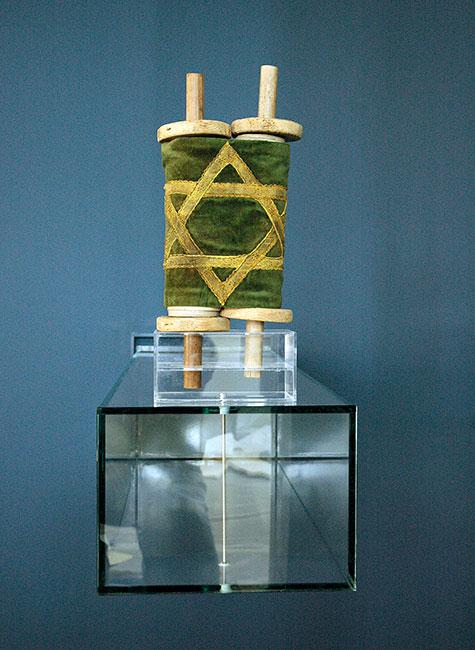
Yad Vashem





Of the million plus visitors to Yad Vashem every year (bar the Corona-induced shutdown), many are unaware that within its famed Museum Complex is a beautiful Synagogue. Alongside its identity as a functioning house of worship, the Yad Vashem Synagogue serves as another symbol of the destruction of the Jewish world that once thrived in Europe and was almost completely destroyed during the Holocaust.
Designed by world-renowned architect Moshe Safdie, the concrete structure is divided into a central assembly hall, in which both regular and memorial services are held, as well as an exhibition space containing dozens of Judaica items from destroyed European Jewish communities. All along the circular outer wall of the Yad Vashem Synagogue are remnants of a world of faith and culture mercilessly annihilated by the Nazi Germans and their collaborators.
Amongst the Judaica on display in the Synagogue is a metal sheet inscribed with the Ten Commandments, as well as a small Torah scroll. These two artifacts were brought with Jews deported from Romania to the area of Transnistria, in the hope of upholding some of their traditions while being subjected to the harshest of conditions, persecution and murder.
At the heart of the Synagogue lies a Holy Ark from a Synagogue that once stood in Barlad, Romania. At the top of the Torah Ark is a two-headed eagle with wings spread and body tilted forward. The eagle is an allusion to God, who protects his people like an eagle protects its young – yet another tragic sign of belief that the Jewish people would be sheltered from those who wished them harm.
Before the war, Romania was home to a large Jewish population and boasted hundreds of synagogues. As an ally of Germany, the Jewish population suffered from anti-Jewish legislation and ultimately were rounded up and deported for extermination. Between 1940-1944 approximately 380,000-400,000 Jews were murdered in Romanian-controlled areas. While many of the Jews of Romania were murdered during the Holocaust, both of these artifacts remained as evidence of the once-thriving community.
Certain items in Yad Vashem's Judaica collection displayed in the Synagogue were acquired by Yad Vashem thanks to a little stuffed teddy bear, named "Bear." "Bear" belonged to Dutch-born psychologist Fred Lessing. During World War II, while in hiding, "Bear," gifted to him by his mother, helped Fred cope with the loneliness and separation.
Years after the war Yad Vashem learned of the precious toy, and approached Dr. Lessing, requesting that he loan the teddy bear to Yad Vashem in order to tell his moving story. "I never said goodbye to him," Fred responded almost immediately, but after "talking" to the teddy bear and explaining the importance of remembering the Holocaust and telling his story to children, Dr. Lessing agreed to loan "Bear" to Yad Vashem. Arrangements were made to bring this irreplaceable remnant of the Holocaust to Yad Vashem from the United States. These preparations included insuring the item. When asked by the insurance company how much the item was valued at, then Yad Vashem Curator Haviva Peled Carmeli expressed the opinion that it should be valued like the Mona Lisa.
Several years later, during an official state visit of a Romanian President to Israel and Yad Vashem, the President toured the exhibition entitled, "No Child's Play," where "Bear" was on display. Hearing the story of how Yad Vashem received this artifact, the President was so moved that he inquired what he could do to help Yad Vashem in their mission to educate about the Holocaust. It so happened that for years, Yad Vashem had been trying to obtain religious artifacts from prewar Romanian Jewish synagogues to display in the newly constructed Synagogue on the Mount of Remembrance. Director of the Yad Vashem Museums Division Yehudit Inbar took the opportunity, and requested assistance in obtaining these sacred artifacts. The President agreed, saying that any institution that values a ragged doll equal to that of the Mona Lisa would surely safeguard these national treasures. Shortly after the visit, arrangements were made to transfer many of the Judaica items now displayed in the Synagogue, after undergoing a careful process of conservation in Yad Vashem's professional laboratories.
As we approach Shavuot (Pentecost), the holiday that marks the receiving and acceptance of the Torah by Moses and the newly formed Jewish nation, our appreciation for the centrality of the Synagogue in Jewish life naturally grows stronger. We, like our Jewish brothers and sisters over thousands of years, remember the hallowed scene as the Torah was given to the people of Israel on Mount Sinai. Through its unique display in its functioning Synagogue, so too does Yad Vashem uphold the commandment of Remembrance – Remembrance of the Holocaust. We must ensure that the memory of the Holocaust never fades, and the faith of our persecuted fellow Jews in a better future serves us as we move forward. Seventy-five years later, in the shadow of renewed antisemitism across the globe, our mission is unwavering and remains more relevant than ever today.









